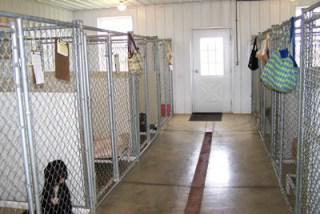I live in Colorado. Naturally, the wildfires currently burning across the state are top of mind for all residents and particularly for those who have been directly affected. As many as 50,000 people have had to evacuate their homes over the past few weeks. Hearing all the stories from evacuees, the recurring theme is the lack of time to gather belongings and get out--often as little as 15 or 20 minutes. And many lament that they had not prepared an emergency evacuation plan.
This got me thinking: What if I were pet sitting for a client whose home was in an evacuation area? It would be on my shoulders to provide for the safety of my client's animals. Although I carry an emergency kit to care for minor medical issues and I typically have at least one crate with me and several leashes so that I could transport one or two pets, I really don't have a solid plan for dealing with a client's animals in such a situation. So I've begun creating one.
General Pet Evacuation Plans
Where will I take my clients' dogs, cats, and miscellaneous small pets like guinea pigs or reptiles if their house is in an evacuation area?• Is my home an option for them to stay? Do I have room? Sufficient kennel space or crates? Will my other animals tolerate visitors? Is my family/roommates OK with having strange animals around? Will someone be around to care for them as needed (i.e., will you be working or pet sitting, and therefore have to leave the animals alone for long periods)?
• What animal shelters, boarding facilities, veterinary hospitals are in my area. I made a list of potential places where I could take evacuated animals. I called each place to find out their policies, prices and whether they would handle my clients' animals.

I don't provide services for large animals, but if you do, you need to know where to take them and how to get them there. Often the local fairgrounds will have livestock barns that they open up for animals during emergencies. Your local animal shelter should be able to offer suggestions for where to take large animals.
How will I transport pets out of the area? I have access to 5 pet transporters of various sizes and types and I have numerous leashes as well for getting dogs to my vehicle. Depending on the number of animals I'm caring for, I may need to enlist the help of friends, neighbors, or other pet sitters to provide transportation services. I have relationships with other pet sitters and we sometimes fill-in for each other if one of us can't fulfill our pet sitting obligations for some reason. I know I can count on them for help and I would help them as well should the need arise.
Customizing a Pet Emergency Plan for Each Client
So I suggest you create a basic pet evacuation plan. Then on your initial client interview, discuss with the client the options outlined above to determine their preferences. And learn what each party expects of the other. Any reputable pet sitter will do everything in his or her power to rescue an animal, but there are limits: Never put your life in danger. But you do owe it to your client to remain alert to dangerous conditions and tune in to emergency media channels so that you can act quickly to save their animalsTo help with the emergency preparation, encourage your client to have proper and complete identification. ID tags and, ideally, a microchip will help bring a lost dog home if it were to run off during the chaos. Also make sure you have access to a current photo of the pet.

Remind clients to keep their pets' vaccinations current--for the pets' safety and because most boarding facilities won't accept an animal who is not up-to-date. Make sure you have access to proof of vaccinations as well as a medical history and veterinary contacts.
Although chances are slim that you'll ever need to evacuate a pet sitting client's animals, it only takes a little bit of effort for the peace of mind knowing you're prepared to do your utmost to rescue them and provide a safe home-away-from-home. And it provides a good opportunity to educate your pet-sitting clients about the importance of emergency preparedness. Your clients will appreciate your concern and dedication to their pets' well-being. This can help build rapport with the client and inspire trust. All good for your pet sitting business's reputation.

